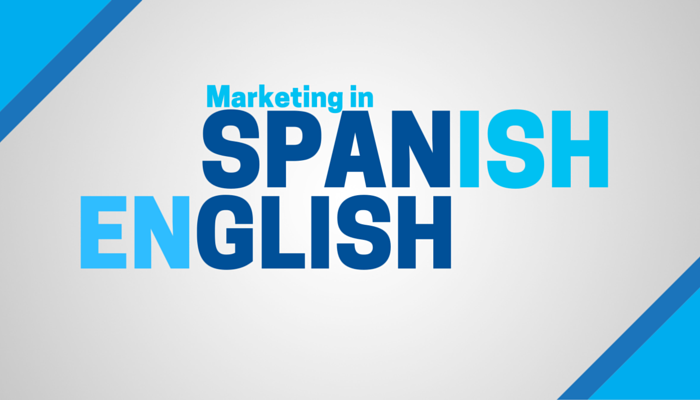The Single, Most Powerful Insight When Marketing in Spanglish

By now, smart marketers have figured out that one of the best ways to reach the Hispanic market is by breaking down the language barriers between English and Spanish. As the use of the English language continues to rise among Hispanics, it makes sense to leverage both languages.
This can mean different things for brands. Depending on your marketing strategy, it might make sense to use both languages equally (a bilingual approach), focus on one language more than the other, or even target Hispanics using Spanglish, which is a mix of the two.
We’ve explored the latter in several posts, where we’ve talked about how Spanglish can take your Hispanic marketing to the next level and the importance of having a dual language strategy. Here we’ll take a deeper dive into an important insight we’ve learned from using Spanglish that relates to the way the languages and words are combined.
Combine Languages, but Don’t Tangle the Words
Hispanics use Spanglish all the time. They might start one sentence in English, and finish their thoughts in Spanish, or vice versa. It’s so seamless, some don’t even realize that they are doing it. For brands, success here means hitting those same authentic high notes, where consumers feel emotionally connected and compelled to take action.
Here’s what mixing languages the right way looked like on a Facebook ad for one of our clients, the League of Conservation Voters:
Notice how the words in English and Spanish are mixed, but together they tell a story in both languages. It’s conversational and colloquial. The brand comes across as authentic and culturally connected, with a strong call to action.
But there is one powerful insight that brands should keep in mind when using Spanglish: You can combine the languages in a phrase, but don’t tangle the words.
Hispanics sometimes use words that are a mix of English and Spanish such as lonche (lunch), tiquetes (tickets) or marketa (supermarket). These kinds of words have long been associated with linguistic laziness, and therefore can generate strong negative reactions. They are often seen as disrespectful to both language and culture, and even frowned upon when spoken in social settings.
This is especially true when it comes from a brand.
For marketers, words like these can be like landmines in a Facebook news feed, waiting to spray their shareable shrapnel of bad PR. They turn consumers off, and it makes brands come across as inauthentic at best and disrespectful at worst.
Here’s a list of more hybrid words to watch out for:
- Wachar (to watch)
- Biles (bills)
- Troca (truck)
- Chilear (to chill)
- Mapear (to mop)
- Janguear (hang out)
- Weldiar (to weld)
- Frizar (to freeze)
- Rufero (roofers)
- Freimeros (framers)
With the exception of specialized terminology in the world of business and information technology, where the adoption of English is more common, try to stay away from these words.
What Brands Should Do
Using Spanglish as part of your marketing strategy can pay off big time. It can help you create long-term relationships with engaged, tech savvy Hispanic audiences that crave culturally relevant content.
If you’re marketing to Hispanics, make sure you understand the nuances of the language and culture when developing a dual language strategy. When it comes to Spanglish, remember this Spanish saying: juntos, pero no revueltos (together, but not tangled up).
![]()
